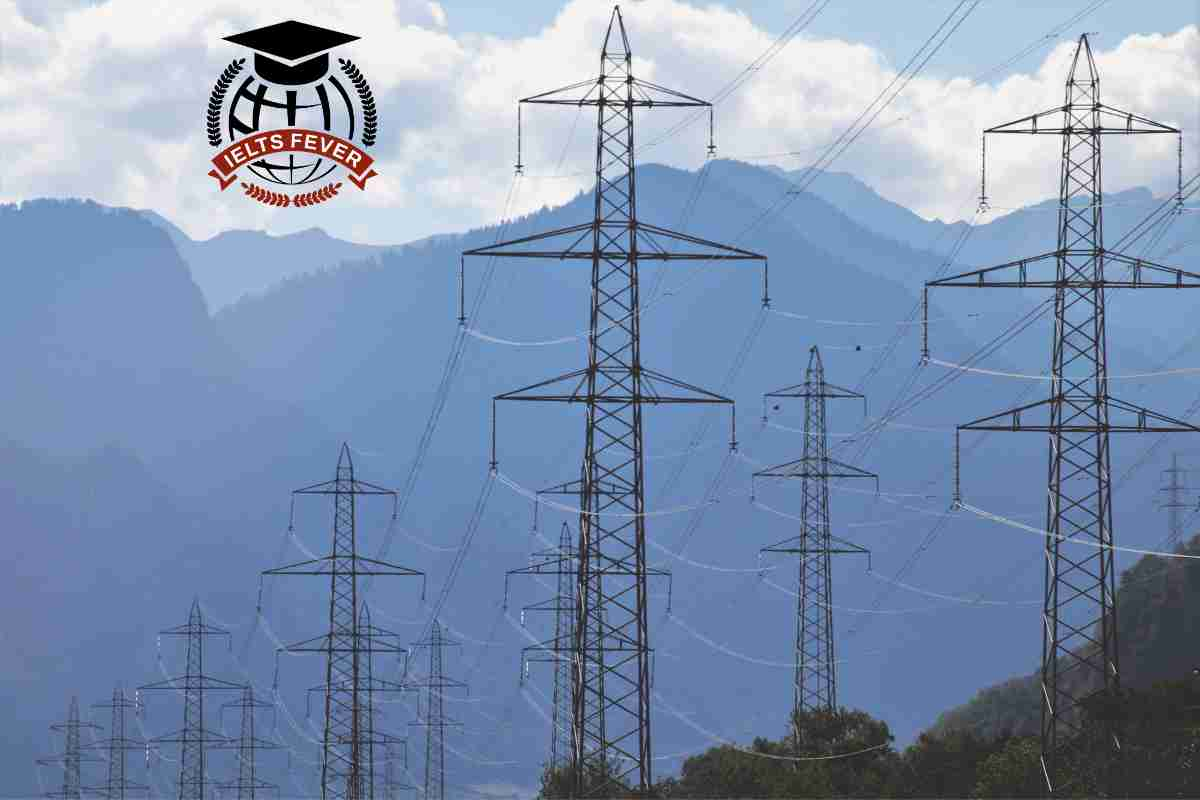The Diagram Below Shows the Process of Using Water to Produce Electricity. Summarise the information by selecting and reporting the main features, and make comparisons where relevant.
The chart given illustrates the information about how water is used to make electricity in hydroelectric in distinct stages.
Overall, it can be seen that there are a total of 6 stages for the procedure of making electricity from water, beginning with evaporation till the power supply to various destinations.
To begin with, in the first stage, due to the heat of the sun water evaporates from water resources such as the sea, forming clouds that downpour after some time because it contains a too small amount of water. Storing water in the reservoirs could preserve the water as the huge dam is built to store the water flow. In the next step, when the valve opens, the turbine is started to rotate at high speed because of the high pressure of the water, while some amount of water again restores to the reservoir through a pump for later use.
In regard to further details, electricity is transferred from the transformer via high voltage cables which are constructed far from the living area. Then, in the next step, in the transformer station, the voltage of electricity is adjusted to be safe for daily use before supplying for consumption in commercial factories, residences, and hospitals/schools by underground cables.
Sample 2
The given process diagram gives an idea of how electrical power is generated with the help of water.
Overall, the entire process of generating power supplies contains seven different steps. Beginning with the sun’s rays and ending with the generation of electrical supplies for hospitals and schools.
In the first step, seawater absorbs hot sun rays and generates vapour that makes clouds in the sky and falls as rain. The dam reserves rainwater, and one valve is fitted at the bottom of the dam. One electrical turbine is used to generate electricity, which connects to the dam valve with the help of a tube. Once water is used in the turbine, it is pumped back into the reservoir.
Furthermore, generated electricity is transferred by high-voltage cables on big towers to transformer stations. In the final stage, underground cables distribute this energy to different areas, such as hospitals, schools, houses, and factories.
In short, it is a long and expensive process because lots of resources are required.

